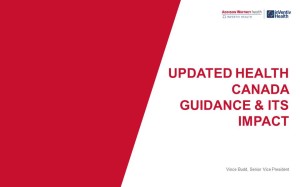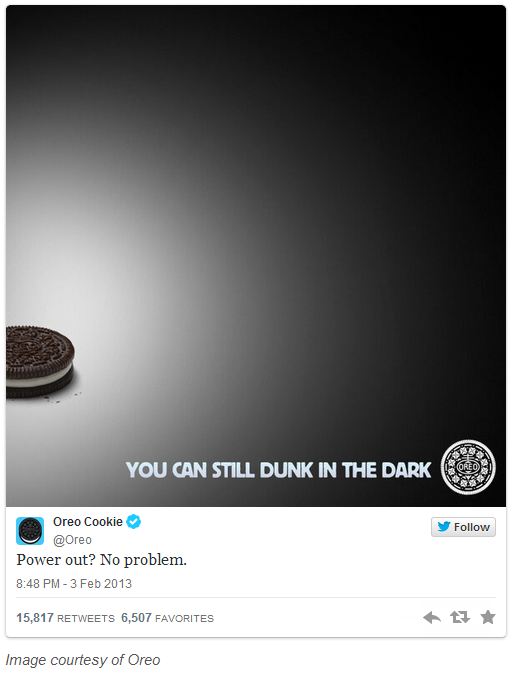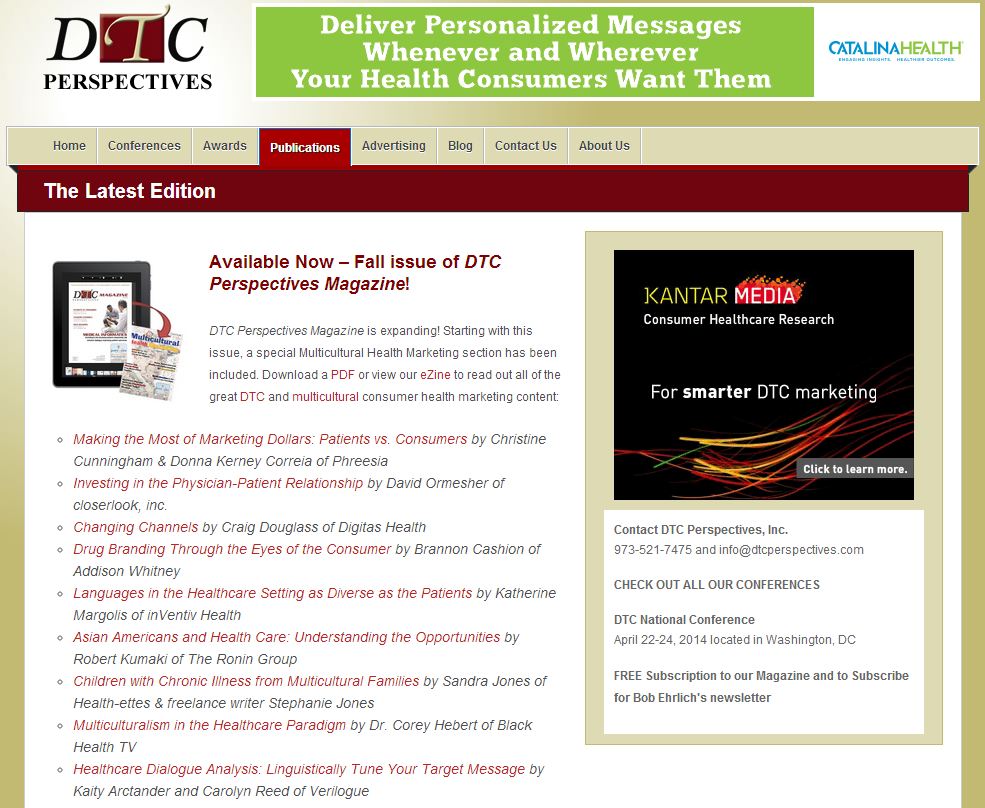Three Questions to Ask When Determining Your Pharma Brand Name Strategy
Today we are excited to have a guest blog from Joshira Maduro, Verbal Branding Associate at Addison Whitney!
By understanding the general buckets of naming strategies and the scenarios in which these types of names thrive, pharmaceutical companies can hone their naming strategy. At the same time, these teams can hedge their risk by including options from different strategies, specifically blank canvas, to avoid the need to start over.
When looking into a naming strategy for your product here are a few questions to consider:
- Is this drug being marketed to patients or doctors?
The answer to this question can help you hone in on your naming direction. Is this drug going to air on TV with commercials that say “ask your doctors about __.”? If so, then creating a marketable story through the name will be vital. In that case, an aspirational “risky” name could be a big payoff if it became memorable enough to stay at the top of the patient’s mind. It will be easier to building a remarkable story behind an emotional name than to try to build brand recognition behind a very scientific, functional name.
Blank canvas options can also work well for patient-facing drugs because they can stand out more: blank canvas names will be unlike anything the patient has heard before, which gives marketers the opportunity to build the story behind the name to be memorable. While the drug itself needs to be effective with proven results, a memorable name and story can cause patients to seek it out proactively. 
On the other hand, if doctors are the primary audience, then a scientific name would tend to yield the best result: the doctor can quickly identify the drug and its indication which will lessen the possibility of confusion. Doctors will not be as interested in a memorable story; they are more concerned about knowing that the drug will work for their patient and that they are prescribing the right medication for them.
- Is this a first-in-class or a “me too” drug?
Often the naming strategy for a drug will depend on the other drugs that are already in the market to treat the same indication. A “first-in-class” drug uses a mechanism of action (MOA) that currently does not exist. For drugs that are first in class, a scientific/functional name can be an excellent way to stand out while also being a safe name. First, in class would mean that there are no competitors in the same space so look alike and sound alike would not present a significant issue.
On the other hand, when the drug has nothing unique regarding MOA, an aspirational name may be the best route to go. By working with a key emotional benefit, the name can find a way to stand out in a crowded space.
- What if my first choice name gets denied by the FDA?
The process of getting the marketing team, product team, and senior level management to agree on a top choice name is already hard enough. But even when they can all agree on the same name, there is still the hurdle of FDA approval to overcome. A thorough screening process can significantly minimize the risk of FDA denial, but there is always the chance that the first choice name gets denied regardless.
To hedge your risk, you need to make sure that there are options for each type on the name in the top 5 list of name candidates: functional, emotional, and blank canvas. In the end, the blank canvas will always be the safest route to go, because it is meant to look like nothing else, but it can be hard to get an entire team on board to adopt a meaningless name.
Risk vs. Reward in Pharmaceutical Brand Naming
Today we are excited to have a guest blog from Joshira Maduro, Verbal Branding Associate at Addison Whitney!
Getting a drug from the lab to the market is an incredibly time consuming and resource consuming task. There are several rounds of clinical trials the drug needs to pass, which only occurs after pre-clinical research. Then there is the approval process, where the regulatory agencies not only check all the related data about the drug to ensure its efficacy and safety for approval, but also review the proposed brand name to ensure it is sufficiently unique from names of drugs already on the market.
In the pharma world there are two factors that regulatory agencies consider “risky”: if looks or sounds too much like a drug already on the market and if the name gives too much of a claim or over-promise.

For instance, a name with the word “cure” in it, or a name that shares its first five letters with another drug already in the market would have a difficult time gaining approval. Companies avoid these risks by going through a rigorous screening process before submitting their final name candidates. The screening and approval process can easily take months, if not a full year, so it’s important to make sure the naming process provides more than enough “safe” options to keep up with launch timelines.
However, sometimes it pays off to take a riskier route, going outside the norm and developing a name that would stand out in a saturated marketplace. These names, if approved, have a high opportunity for easy name recognition, which greatly benefits future marketing efforts.
Generally speaking, brand names fall into three strategic categories – Blank Canvas, Scientific/Functional and Aspirational. They are each defined by the rationale behind the brand name and how it ties back to the product and the overall brand strategy. Additionally, they each carry “safe” and “risky” name characteristics, which must be balanced when creating a name that fits into the category. Here are three main types of brand names, and where they fall in the “safe name” spectrum:
- Blank Canvas: These names tend to have no inherent meaning but aim to sound nice and look intuitive to say. The biggest risk these names face are the lookalike/soundalike comparisons to competitor drugs. In my opinion, these would be the “safest” option in naming.
- Scientific or Functional: A name that leverages letter strings from its generic name or Mechanism of Action would fall into this category. These names can face more risk than blank canvas because there will likely be another competitor already leveraging similar concepts in their name. There is also a danger of having a name that shares too many letters with its generic.
- Aspirational: These are the names that truly look to tell an emotional story. Telling an emotionally impactful story can make the name stand out more to patients, especially if it is a drug in a very crowded space. However, since these types of names have the risk of looking/sounding like a competitor and being a claim, the fall on the riskiest end of the spectrum.
So which of these types of names is the best for your drug? Well, there is no clear-cut answer. Each of these kinds of names has their risk, so there is no truly “safe” option. However, it would take more effort to get a more aspirational name to pass screens and gain FDA approval compared to a blank canvas name. On the flipside, an aspirational name can yield more differentiation in a saturated market compared to a scientific/functional name so that it could be worth the effort.
In the end, where you brand name falls in the spectrum is a case-by-case decision, which is a statement that isn’t as obvious as it sounds. Yes, of course each name development process is different, but often we fall into the trap of looking around and allowing trends or patterns to weigh more heavily on the decisions than they should. Deciding what factors are most important in the long run and sticking to those decisions can give your drug name the best chance of success, both in the approval process and on the market.
Addison Whitney President Brannon Cashion Featured in "Brand Slam" Article in Latest PM360 Magazine
Addison Whitney’s Global President Brannon Cashion is featured in the December edition of PM360 Magazine, with the final 2015 edition of his of his series of "Brand Slam" articles.
This month’s edition of the “Brand Slam” article series is titled “Seize the Innovative Moments - Branding Today”
A brief passage from the article is below, and if you’d like to read the entire post, you can find it here.
Seize the Innovative Moments - Branding Today
Today, we are seeing breakthroughs—decades in the making—that offer life-altering possibilities. The question is, would you risk that breakthrough never making it to market and never living up to potential by trying to go too far outside of the box when it comes to branding?
The importance of foundational brand strategy practices is a proven crucial aspect in pharmaceutical and healthcare branding. A great brand allows these innovative products to quickly and effectively reach those for which it can have a significant impact.
The foundation for a good brand is built on covering all of the bases. Not only does it meet the required elements for regulatory approval, but it also connects in some way to the product for which it is branding. This is not a one-step process, as it includes buy-in from a number of different areas, including market research, brand strategy and a quality verbal and visual branding team.
Addison Whitney is a global branding firm with a passion for building strong brands.
To learn more about Addison Whitney, visit our website at AddisonWhitney.com, or contact us here.
WEBINAR: New Health Canada Regulatory Guidelines: Are You Prepared?
In June 2015, Health Canada’s new guidance for the review and submission of drug brand names went into effect bringing with it significant changes in how your drug brand names will be reviewed, and the responsibilities of the drug manufacturers in this new process.
To learn more about these changes and how this will impact your preparations to launch a product in Canada download Addison Whitney Health’s webinar where we cover:
- Overview of the regulatory changes
- New steps involved in the process: Search, Simulate and Synthesize
- Name preparation & submission process
- FAQ's about Health Canada's changes
Download the video here: http://bit.ly/1e0tBEd
Making a Strong First Impression: 5 Benefits of Clinical Trial Branding
It has been said that you never get a second chance to make a first impression. For many new assets the clinical trial stage of development is that first impression – the initial interaction it will have with those who will impact its future both from research and consumer perspectives.
With a strong brand in place prior to making this first impression, brands can ensure they will be moving forward following a positive first impression and giving a product a better chance to develop a positive brand image. Here are five benefits to clinical trial branding:
- Build Brand Equity Early
In the development of a new asset, branding during the clinical trial process is step one in building brand equity through awareness and familiarity, giving the brand an opportunity to establish positive associations and laying the foundation for future perceptions.
“In a saturated market for new pharmaceutical products, the companies that can create differentiation within their field and stand out to their audience are the ones best set up for a successful journey through the drug development process and beyond,” says Brannon Cashion, Addison Whitney Global President. “This is where clinical trial branding makes its mark. Having a strong brand in the clinical trial process can be the driver behind a raised level of recognition and make the asset stand out.”
- Make it Easy to Remember and Recall
The fact that a branded name is easier to recognize, process and remember than a code-like name is another point of differentiation provided by clinical trial branding.
Both internal teams and external audiences need to be on the same page in regards to the name when referring to an asset, and when branded, possesses a well-thought-out and researched name that can serve both groups in their interactions with it.
- Tell the Brand Story
Due to its presence early in a product’s development, clinical trial branding can also serve as a messenger for the asset, communicating its various characteristics.
During the branding processes, research is done to identify how this will be integrated in the brand, based on both the characteristics of the product and taking into consideration the overall market and its opportunities.
- Lay the Marketing Foundation
Clinical trial branding also provides a connection to early marketing efforts for an asset. Branding lays the base to which marketing builds upon, and a strong brand in the clinical trial stages gives it a head start when beginning to determine marketing strategies.
This is again why beginning to brand while in clinical trial is so important – if an organization chooses to wait until later in the product’s development, as they will be working through the branding process while competing assets have already introduced a brand that is building equity and awareness, filling the gaps in the marketplace.
- Tailored to a Proper Fit
Clinical trial branding can take many forms and include an array of features, allowing it to be tailored to fit the characteristics of the asset and the marketplace. This versatility ensures that it encompasses the best aspects of the product and instills confidence in the product’s chances for success.
“A successful and well-strategized branded clinical trial exudes this confidence to the audience, including potential investors and suppliers,” adds Cashion. “This can raise the profile of the asset to otherwise unreachable levels and grow its brand equity.”
Building a brand in the clinical trial stage is an important step in a product’s development, as it creates the first impression that is critical in driving value and success moving forward. These five reasons outline how it can start to work immediately to build a road for success, and can help provide a more effective clinical trial process.
Addison Whitney is a global branding firm with a passion for building strong brands.
To learn more about Addison Whitney, visit our website at AddisonWhitney.com, or contact us here.
Real-Time Marketing: Making It Work For Pharma Branders
Real-Time Marketing: Making It Work For Pharma Branders
Let’s start by creating a baseline for this topic. What is real-time marketing (RTM)? Of all the attempts to define this marketing strategy, a blog post from Evergage sums it up quite nicely: RTM is “…the practice of brands engaging their audience via content, advertising, and product placement that is relevant to a specific current event or cultural happening. The content is most often in the form of a “meme” or graphic advertisement shared through social media channels.”
An easy example? Oreo’s infamous tweet during last year’s Super Bowl.
When we start to look at RTM (sometimes referred to as viral marketing) through a healthcare lens, we need to dig a bit deeper. Pharmaceutical branding is inherently complicated. The industry is overflowing with rules, regulations and guidance – all of which make marketing a bit challenging. And because of these parameters, real-time marketing, as explained by Evergage, seems somewhat elusive.
But, it really is all about perspective. Mashable frames it up a bit differently.
“…real-time marketing success starts with a brand's day-to-day activity, not a single well-timed moment. Don't swing for the fences your very first time out. Implement small, real-time marketing initiatives on a regular basis; patiently teach your audience they can expect timely, relevant communications from your brand. Then, when a really big opportunity arises, your team is poised and ready to make the most of it.”
When considering in Mashable’s frame of reference, RTM and pharmaceutical branding seem to better coexist. This tactic becomes less about a cute response and more about being responsive – and proactively so. Pharmaceutical companies face an unfathomable number of questions from a variety of audiences – and comprehensive, strategic marketing efforts can go a long way to answering a lot of them before they’re even asked.
Pharma branders can utilize RTM by identifying opportunities that work within the confines of their industry – and by viewing those parameters as guideposts, rather than obstacles. A program like TEDMED is a great example of such an opportunity TEDMED brings together like-minded industry professionals and gives them a variety of platforms to promote their brands. Brands can use all of the tools of RTM to tell their story while they attend (or even just live stream) this kind of conference.
And, in order to succeed at RTM, you have to get comfortable with learning as you go along. The fundamental tactics of this type of strategy are content, social channels, mobile and video. Can’t focus on all four areas? Then specialize in one and grow from them. But, the key to real-time marketing is responsiveness – build a program around that and you’re more than on your way to a successful campaign.
# # #
Sources
“Real-Time Marketing Isn’t What You Think It Is,” Evergage.
“Someone Give This Oreo Employee A Raise,” Mashable, Feb. 3, 2013.
“4 Steps to Explosive Real-Time Marketing,” Mashable, July 15, 2013.
“Real-Time Marketing Opportunities in Healthcare?,” brandgagement, May 7, 2013.
“2014: The Year of Digital Pharma?,” Pharmaceutical Executive, Jan. 23, 2014.
Hot off the Press: Addison Whitney Feature in DTC Perspectives Magazine
Our global president, Brannon Cashion, wrote an article about pharma branding through the eyes of the consumer for DTC Perspectives Magazine’s Fall 2013 issue. Check it out: https://goo.gl/bsoh8g!
Branding Pharmaceutical Drugs in China
Did you know according to the Chinese Association for Pharmaceutical Equipment group that the Chinese pharmaceutical industry has been growing at an average annual rate of 16.72% over the last few decades?
And that growth isn’t going to slow down anytime soon.
China stands at the cusp of a modern society with an increasingly affluent and growing population. And it’s this growing population that is demanding better services and quality of life – but how will this impact the pharmaceutical industry in China – particularly in regards to branded pharmaceutical drugs?
Not just in the pharmaceutical industry, but for all industries across the board, China has become the must win market. An aging population, increasingly affluent younger population, and the rise of diseases in China all create an emerging need for drugs, which is why The IMS Institute has predicted that by 2016 China will overtake Japan as the second largest pharmaceutical market in the world. So it’s no wonder why billions of dollars a year are being invested in the country.
Many foreign players such as AstraZeneca, Pfizer, Bayer and GSKhave already established themselves firmly in the market and are expanding their services regularly within the country. But with the entry of foreign players in the industry, the competition amongst these players will continue to increase. China has more than 5,000 pharma companies, and in 2010 was the leading country filing pharmaceutical trademarks – even beating out the United States, one of the most mature pharmaceutical markets by nearly 10,000 trademarks filed. Even though China is the global leader filing pharmaceutical trademarks, the majority of the drugs manufactured in China are generic. But as China’s consumer mindset continues to mature and grow, so will the branded pharmaceutical sector.
Why the continued growth?
Specifically for pharmaceuticals, powerful product brand names are important tools to offset competitive pressure from generics and to build customer loyalty. Though heavily regulated by state legislations, in China’s case the SFDA, brand naming for pharmaceutical products is unique, and can greatly affect marketing decisions.
In highly competitive environments, a strong brand will rise above the clutter and demand attention. With a strong brand, you secure a unique position of credibility in the consumer mind, have more influence on your market and motivate customers to purchase from you.
From a marketing perspective, brand naming for a pharmaceutical product may take into consideration aspects such as the chemical/biological nature of its active ingredient, composition/formulation, therapeutic indication, associated medical condition, benefit and adherence to the corporate identity.
From a communication point of view, pharmaceutical branding specialists must decide whether to focus on the functionality or the end-user benefits. It is also from the same angle that pharmaceutical naming is usually considered of great complexity, as most of the time, both audiences should be targeted.
Chinese regulations on pharmaceutical drug naming frown upon utilization of characters that are either indicative of curative effect, intended use, target audience or may imply efficacy.
Regardless of the market you’re in, developing a strong pharmaceutical name is tough, but in China it can be particularly challenging. You must keep in mind translations, the use of characters and regulatory conditions. Biological and pharmaceutical products rely heavily on the protection of intellectual property rights, so it’s essential for foreign companies to gain thorough understanding of China’s IPR protection system before entering the market.
Multinational companies have greatly expanded their businesses in China over the years and have aligned with local pharmaceutical companies, which has proven to be a winning strategy for both parties. And as these companies and other foreign players continue to expand their footprint in China, competition will become fierce as each seeks to penetrate the market. Pricing, intricate knowledge of regional markets and developing strong brands will determine who gets ahead and who doesn’t.
Why INN's are so Important to a Drug's Life
Every pharmaceutical asset begins with a nonproprietary, generic name, or an International Nonproprietary Name (INN). This name could potentially be the first strategic decision you make for the commercial life of your brand.
But what exactly is an INN name and why do they exist?
Since the inception of the INN naming system in 1950 it has been providing health professionals with a way to uniquely and universally identify each pharmaceutical substance. INN's are not only important in identifying a drug's pharmaceutical ingredients but in providing safe prescription and dispensing of medicines to patients, and communication between health professionals worldwide. The World Health Organization (who manages & issues INN's) issues INN's in English, Latin, French, Russian, and Spanish, and more recently Arabic and Chinese versions are also being issued.
Here Vince Budd, Senior Vice President at Addison Whitney, speaks of the importance INN's have on the success and lifecycle of a drug:
"Although INN’s aren’t actually considered intellectual property, developing an INN is without a doubt a strategic endeavor that many commercial, medical and regulatory officers take very seriously. First, the commercial team of an organization sees this as the first opportunity to put some sort of face or image to the asset. Although WHO would like manufactures to use trivial or fantasy letter strings when building generic names around INN stems, many approved INN’s are actually quite suggestive about the product. This helps some of the branding activities that soon follow. Also, many manufacturers must think about the life cycle of the asset and potential generic competition, which also impacts the type of INN name that is sought. The bottom line is INN development is serious business and the wrong or right name can certainly have an impact on the future success of a drug. "
According to WHO there are roughly 8,000 INN's listed today, and that number grows by approximately 120-150 each year. Every INN must be submitted to and approved by WHO, and must follow their general principles for developing INN's.
Source: World Health Organization
FDA Approval: Edarbi
FDA approves Edarbi to treat high blood pressure (source: FDA Press Announcement)
On Friday, February 25, 2011, The U.S. Food and Drug Administration approved Edarbi tablets (azilsartan medoxomil) to treat high blood pressure (hypertension) in adults.
Data from clinical studies showed Edarbi to be more effective in lowering 24-hour blood pressure compared with two other FDA-approved hypertension drugs, Diovan (valsartan) and Benicar (olmesartan).
“High blood pressure is often called the 'silent killer' because it usually has no symptoms until it causes damage to the body,” said Norman Stockbridge, M.D., Ph.D., director of the Division of Cardiovascular and Renal Drug Products in the FDA’s Center for Drug Evaluation and Research. “High blood pressure remains inadequately controlled in many people diagnosed with the condition, so having a variety of treatment options is important.”
Edarbi will be available in 80 milligram and 40 mg doses, with the recommended dose set at 80 mg once daily. The 40 mg dose will be available for patients who are treated with high-dose diuretics taken to reduce salt in the body.
Blood pressure is the force of blood pushing against the walls of the arteries as the heart pumps. If blood pressure rises and stays high over time, it can damage the body in many ways. Nearly 1 in 3 adults in the United States has high blood pressure, which increases the risks of stroke, heart failure, heart attack, kidney failure, and death.
Edarbi is an angiotensin II receptor blocker (ARB) that lowers blood pressure by blocking the action of angiotensin II, a vasopressor hormone.
Adverse reactions reported by patients taking Edarbi in clinical trials were similar to those reported by those taking an inactive drug (placebo).
Edarbi has a boxed warning that says the use of the drug should be avoided in pregnant women because use of the drug during the second or third trimester can cause injury and even death in the developing fetus. If a woman becomes pregnant while using the drug, it should be discontinued as soon as possible.
Edarbi is made by Takeda Pharmaceutical North America of Deerfield, Ill.
For more information on pharmaceutical naming, branding, research or submission documents, please contact Vince Budd at Addison Whitney via email or phone 704.697.4021.





